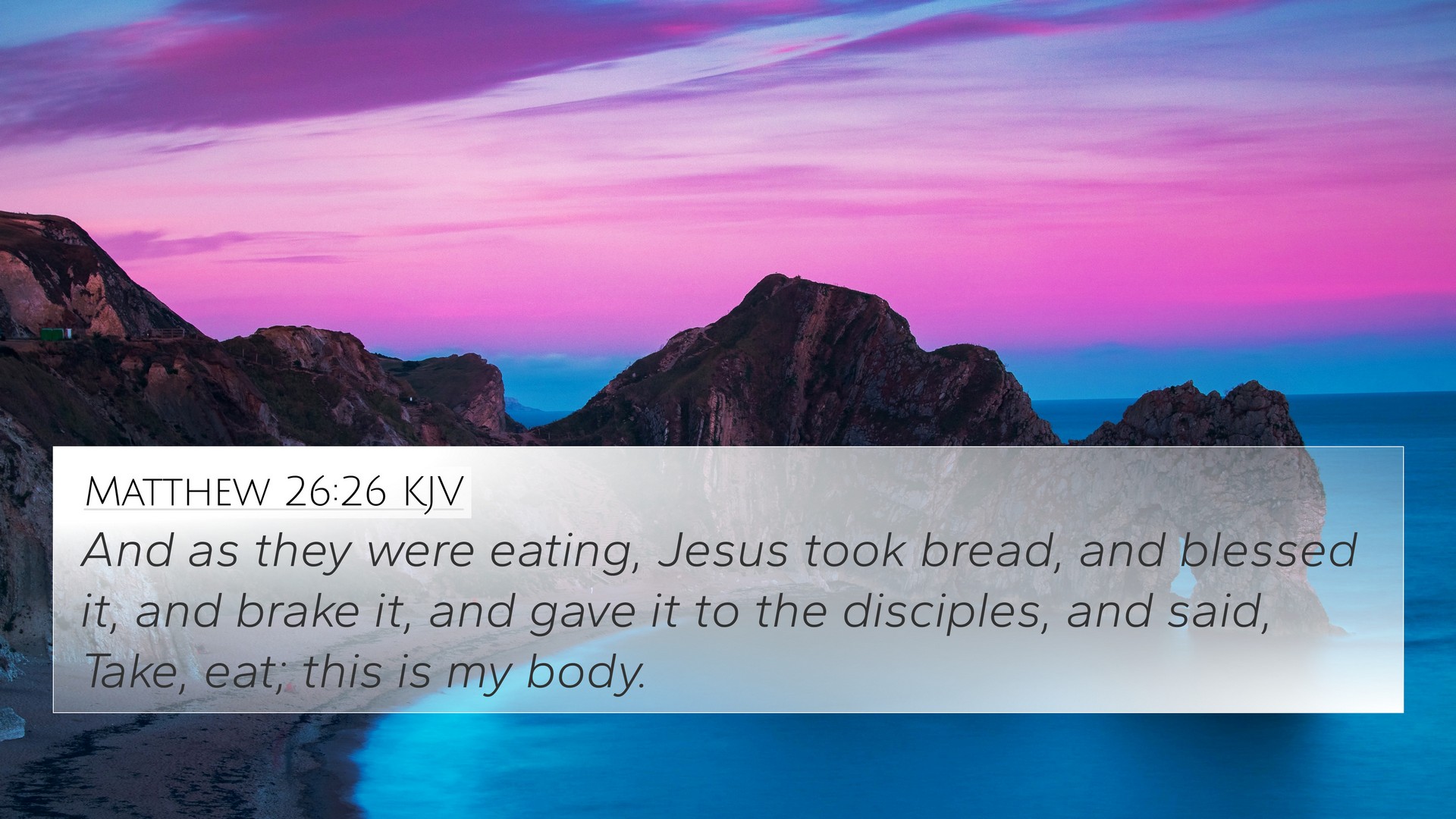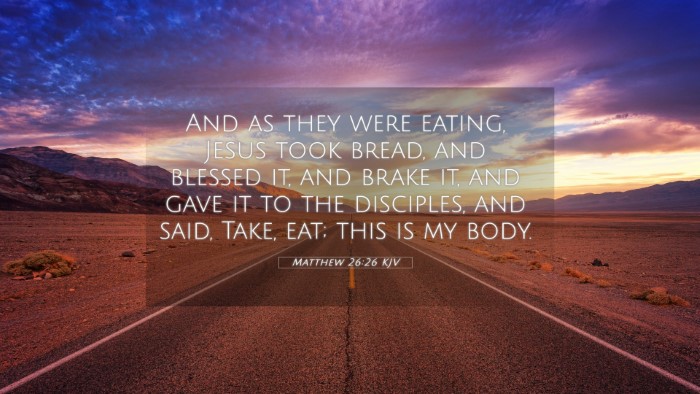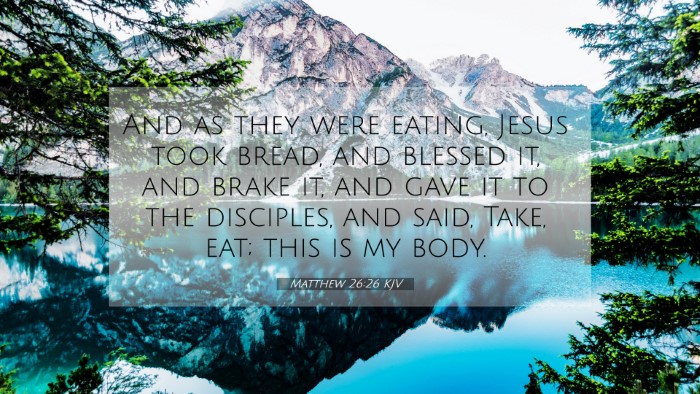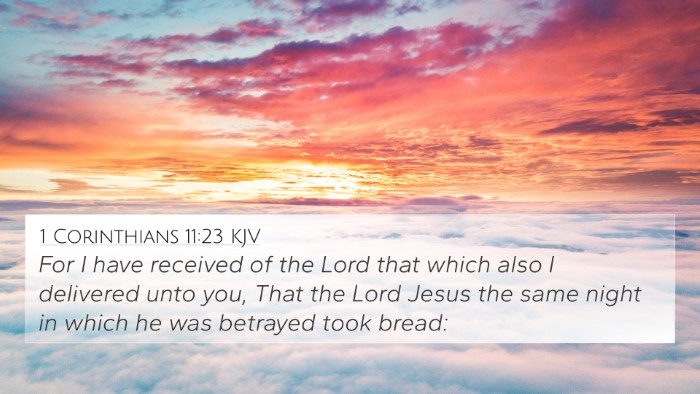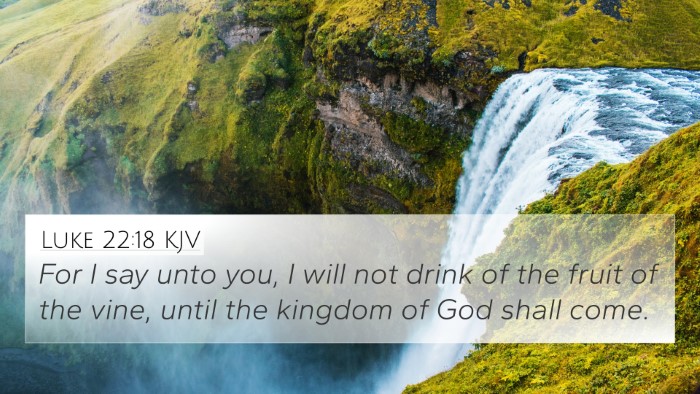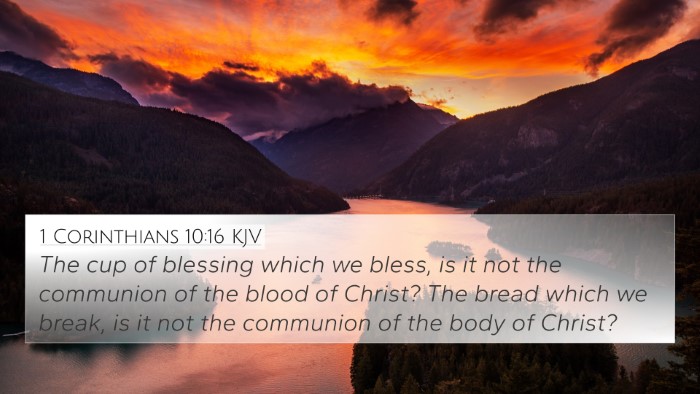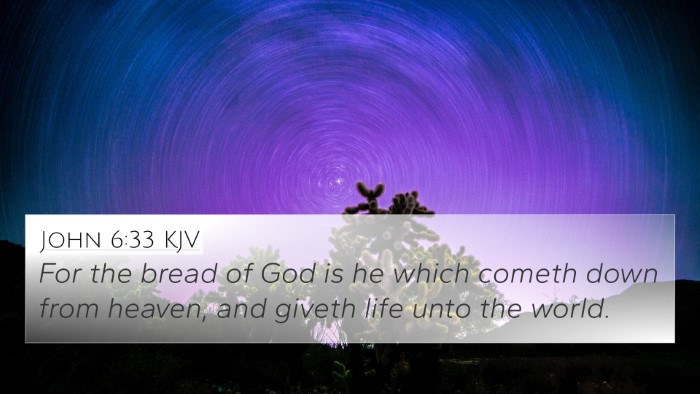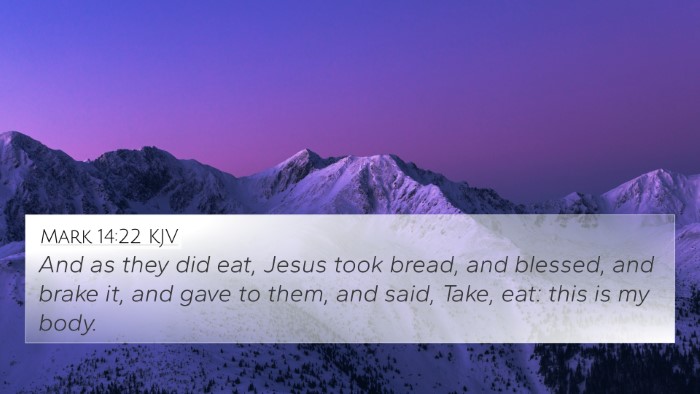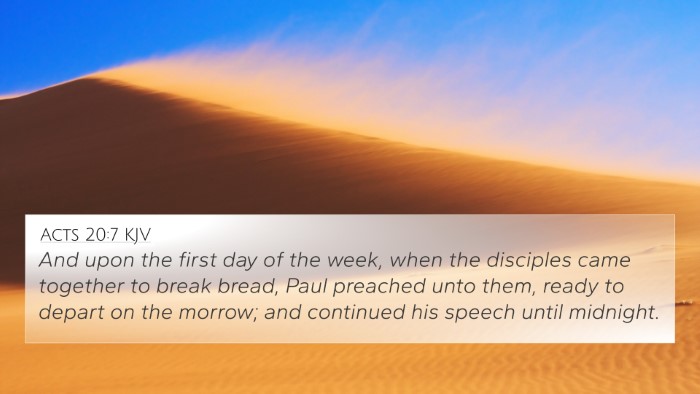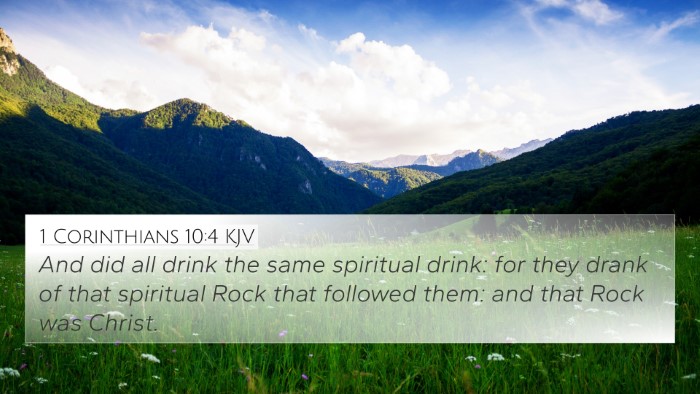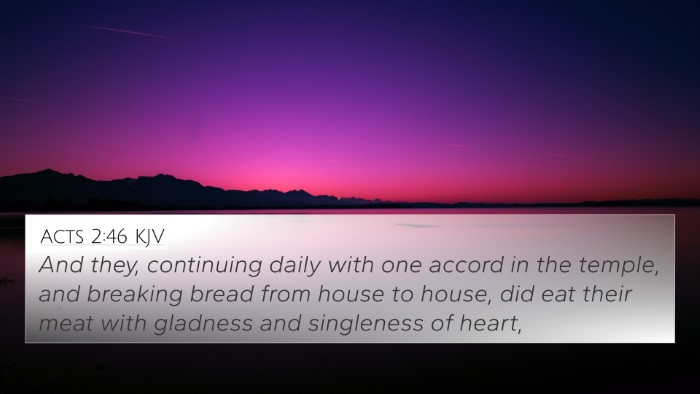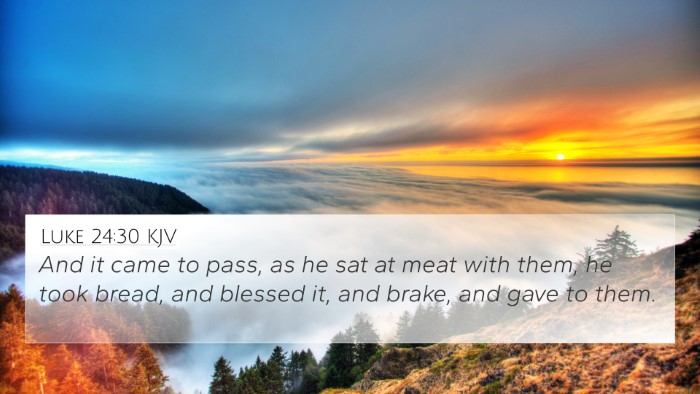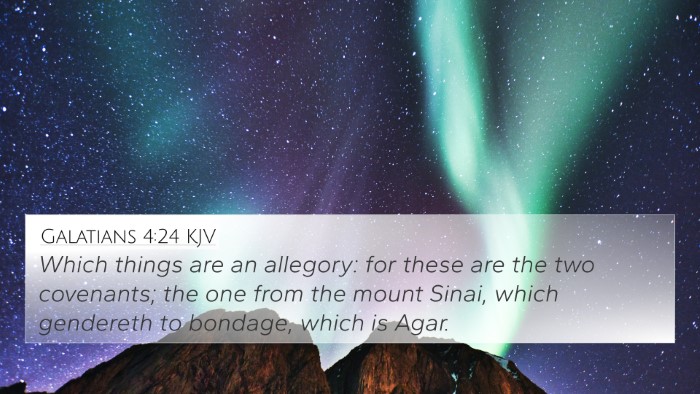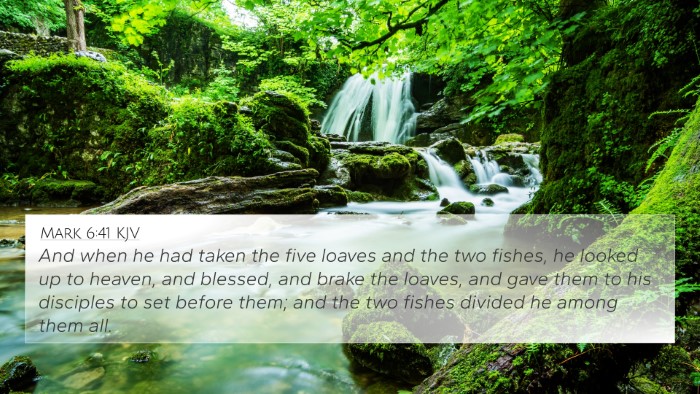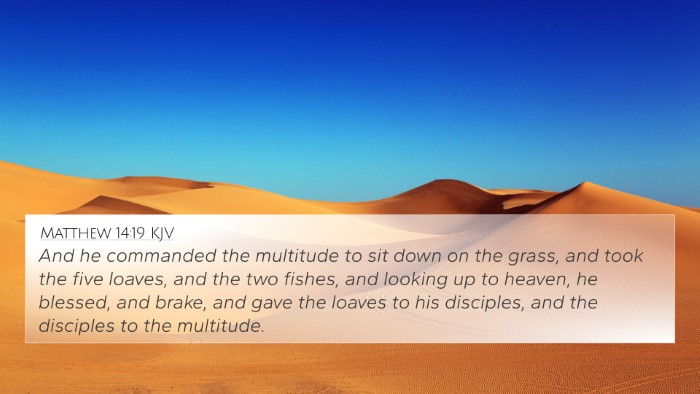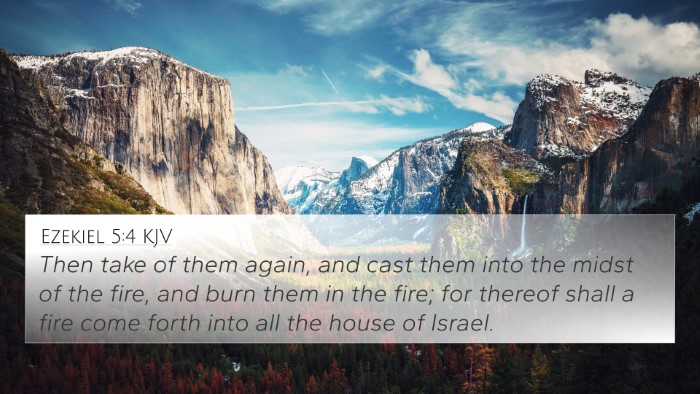Understanding Matthew 26:26
Matthew 26:26 states: "And as they were eating, Jesus took bread, and blessed it, and brake it, and gave it to the disciples, and said, Take, eat; this is my body." This verse is significant as it marks the institution of the Lord's Supper, highlighting the importance of communion in Christian practice.
Commentary Insights
Matthew Henry's Commentary:
Matthew Henry emphasizes that this moment depicts not just the Last Supper but a transition from the Old Testament sacrificial system to the New Covenant in Christ’s blood. The breaking of bread signifies Jesus’ body being broken for humanity. It symbolizes sacrifice, service, and sustenance for the believer’s soul.
Albert Barnes' Notes:
Barnes discusses that Jesus took the bread and blessed it, indicating His divine authority and the sanctifying power of His presence. The invitation to "take, eat" is a call to partake in the spiritual nourishment that comes from Jesus alone, teaching believers about reliance on Him for their spiritual needs.
Adam Clarke's Commentary:
Clarke remarks on the act of breaking bread as a shared meal amongst friends, symbolizing unity in Christ. He notes that the directive to eat showcases the fullness of participation in Christ's sacrifice and the establishment of a new relationship between God and humanity through Jesus’ body.
Thematic Connections and Cross-References
This verse has profound connections with various other scripture passages. Below are some pertinent cross-references:
- John 6:51: "I am the living bread which came down from heaven: if any man eat of this bread, he shall live for ever: and the bread that I will give is my flesh, which I will give for the life of the world." - This verse parallels with Matthew 26:26, emphasizing the theme of Jesus as the sustenance for eternal life.
- Luke 22:19: "And he took bread, and gave thanks, and brake it, and gave unto them, saying, This is my body which is given for you: this do in remembrance of me." - Highlights the institution of the Lord's Supper as well and confirms the meaning of Matthew 26:26.
- 1 Corinthians 11:24: "And when he had given thanks, he brake it, and said, Take, eat: this is my body, which is broken for you: this do in remembrance of me." - Paul reiterates the significance of communion, connecting the act back to Jesus’ teachings.
- Isaiah 53:5: "But he was wounded for our transgressions, he was bruised for our iniquities: the chastisement of our peace was upon him; and with his stripes we are healed." - Foreshadows the sacrificial nature of Christ's coming suffering and death, aligning with the symbolism in Matthew 26:26.
- Exodus 12:8: "And they shall eat the flesh in that night, roast with fire, and unleavened bread; and with bitter herbs they shall eat it." - Relates to the Passover meal, which Jesus reinterprets at the Last Supper.
- Hebrews 10:20: "By a new and living way, which he hath consecrated for us, through the veil, that is to say, his flesh;" - Emphasizes the new covenant established through Jesus’ body.
- 1 Peter 2:24: "Who his own self bare our sins in his own body on the tree, that we, being dead to sins, should live unto righteousness: by whose stripes ye were healed." - Connects Jesus’ sacrificial death with the theme of redemption, resonating with the body in Matthew 26:26.
Tools for Bible Cross-Referencing
Understanding Matthew 26:26 and its connections with other scripture requires tools for effective Bible cross-referencing:
- Bible concordance: A useful tool for finding verses that include similar themes or keywords.
- Bible cross-reference guide: Helps locate similar or connected passages across scriptures.
- Cross-reference Bible study: Engaging in studies that allow for a deeper understanding of scripture through inter-Biblical dialogues.
- Bible chain references: Following a chain of related verses aids in comprehensive understanding of theological themes.
- How to use Bible cross-references: Learning methods to trace themes, characters, and teachings throughout the Bible enhances study practices.
Conclusion
Matthew 26:26 stands as a cornerstone verse in understanding the significance of communion and the new covenant established through Christ's sacrificial offering. By utilizing a variety of Bible reference resources and tools for cross-referencing, believers can deepen their comprehension of this verse and its place within the entirety of Scripture. The connections among these Biblical texts underscore the cohesive narrative of faith, sacrifice, and communion throughout the Bible.
